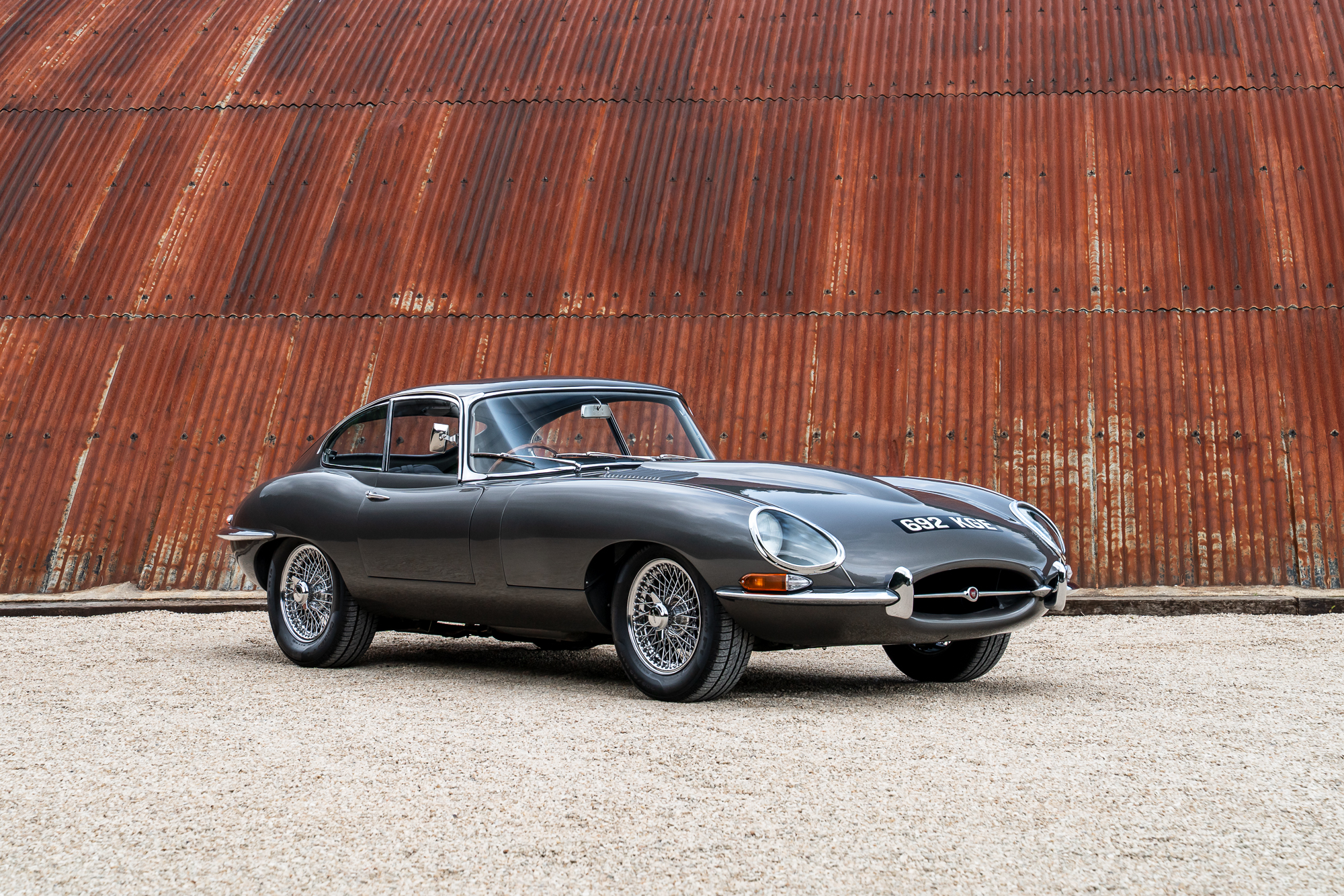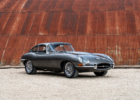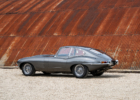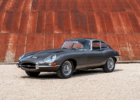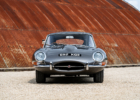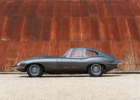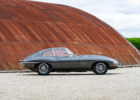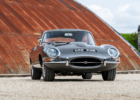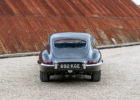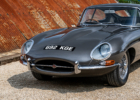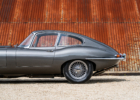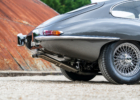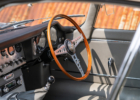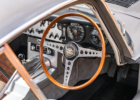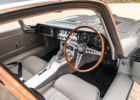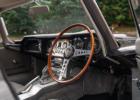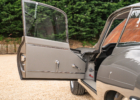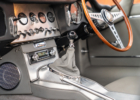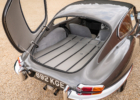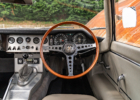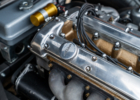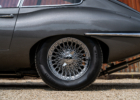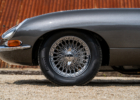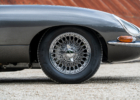1962 Jaguar E-Type 3.8 FHC Series I
- Supplied new via Newton of Huddersfield
- Restored to original colours of Opalescent Gunmetal with Grey trim
- Five-speed gearbox upgrade; original gearbox included in sale
- Recent work by CKL Developments and Southern Classics
| YEAR | 1962 |
| MAKE | Jaguar |
| PRICE | £120,000 |
VEHICLE DESCRIPTION
The Series 1 3.8 Fixed-Head Coupé is among the most coveted of all Jaguar E-types, and this superbly restored example benefits from some subtle upgrades to make it even more usable and enjoyable.
Chassis number 860303 was built on 19 March 1962, and dispatched on 27 April to Jaguar Distributors in Leeds. It was then sold new to a Dr LE Mitchell by Newton of Huddersfield, which was owned by a family that included two rally-driving daughters who were known as the ‘Mad Newton Sisters’. One of them became a highly successful works driver for the likes of Ford and BMC under her married name of Anne Hall.
The registration number 692 KGE was issued in Glasgow, and the E-type was mentioned in the September 1979 issue of Jaguar Driver magazine. At that time, it was owned by David Walker of Crossgates in Fife, and a note said: ‘Body has been assembled, including a brand-new bonnet, engine rebuilt by Sandy Barnett and hopefully going to be on the road next year.’
By 2005, the E-type had been repainted Golden Sand with a Tan interior. It was subsequently restored in Sweden by an owner who was based just north of Stockholm, and the car returned to the road there in 2019.
In 2020, it was acquired by a UK-based enthusiast who sent it straight to CKL Developments for assessment. It was decided that the panel fit needed improving in certain areas, and the cylinder head was rebuilt with new tappets, valves and guides. The differential was also overhauled with a new crownwheel and pinion, plus new bearings and seals throughout.
Since 2022, further work has been carried out by Southern Classics, including a rebuild of the Getrag five-speed gearbox and the fitment of a new clutch plate and release bearing. The radiator has also been recored and an adjustable front torsion bar reaction plate has been fitted.
A retro-look DAB stereo, complete with Bluetooth and hands-free functionality, has been subtly incorporate into the centre console, and there is also a discreet USB charging port.
Presented in its original colours of Opalescent Gunmetal with Grey interior, this beautiful Jaguar E-type is offered for sale complete with its original four-speed gearbox, plus a Heritage Certificate and a USB stick full of restoration photographs.
MODEL HISTORY
Having stunned the motoring world in 1948 with the introduction of the XK 120, Jaguar did it again when it launched the E-type at the 1961 Geneva Motor Show. Its latest model repeated the XK’s intoxicating blend of performance and elegance – and at a much lower price than the few cars that could match it in either area.
Famed aerodynamicist Malcolm Sayer came up with one of the most beautiful automotive shapes of all time, and the E-type offered 150mph performance from its triple-carburettor, 265bhp, 3.8-litre straight-six engine.
Beneath the skin, the E-type owed much to the Le Mans-winning D-type. It used a monocoque centre section with a subframe carrying the engine and front suspension. At the rear, independent suspension was fitted at a time when many of Jaguar’s rivals still employed a traditional live axle. With the marque having pioneered the use of disc brakes in the early 1950s, it came as no surprise that the E-type featured them on all four wheels.
When John Bolster tested a pre-production E-type for Autosport, he wrote that it was ‘capable of whispering along in top gear at 10mph or leaping into its 150mph stride on the brief depression of a pedal. A practical touring car, this… yet it has a sheer beauty of line which easily beats the Italians at their own particular game.’
The E-type was offered as both a roadster and a fixed-head coupé, and in 1964 the 3.8-litre engine was enlarged to 4.2 litres. A long-wheelbase 2+2 model was added to the range in 1966, and in 1968 the Series 1 morphed into the facelifted Series 2. A V12 engine was fitted for the Series III of 1971, and four years later the iconic E-type was replaced by the new XJ-S.
